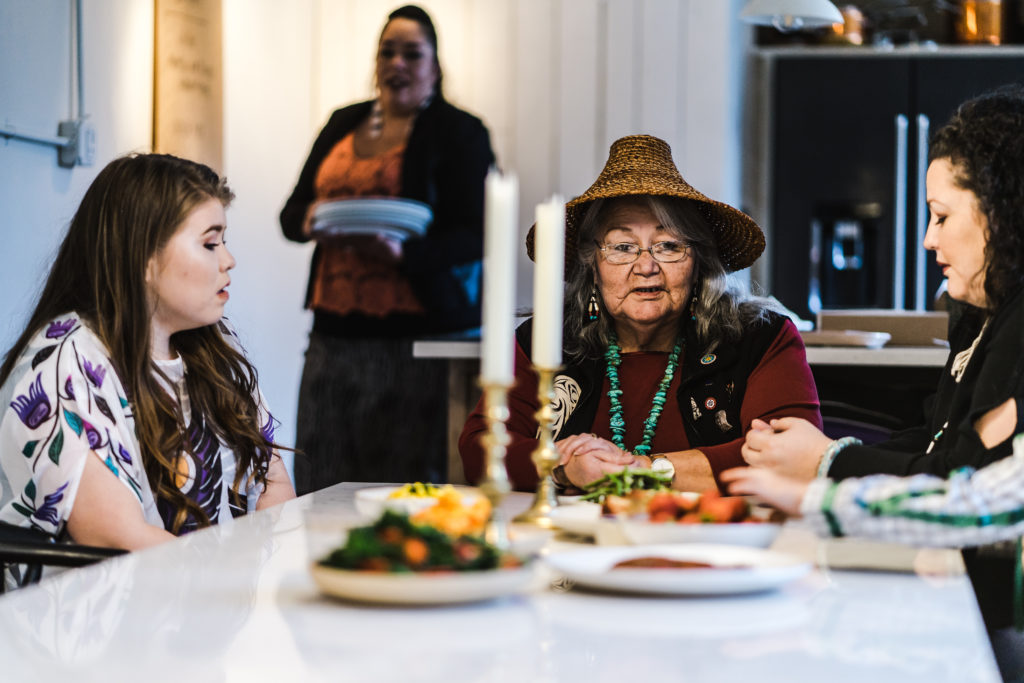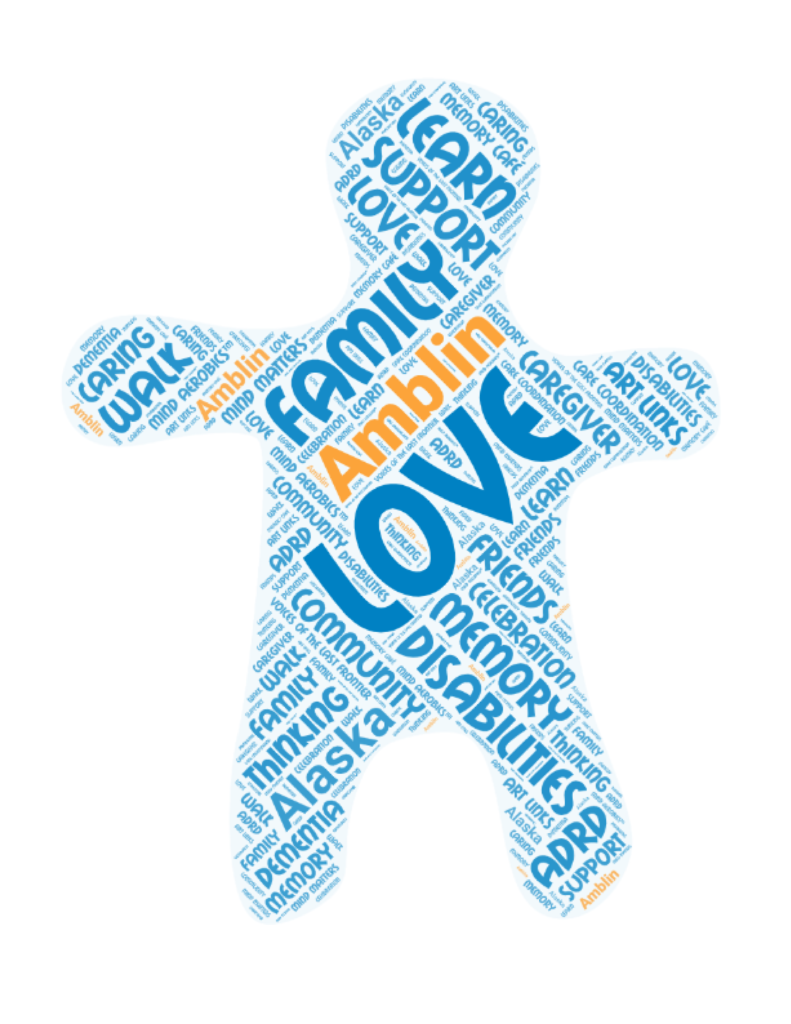Dining & Dementia

Alzheimer’s disease and related dementias can cause a decline in everyday activities including dining.
Many individuals still maintain strengths or overlearned behaviors and eating can be one of those.
As the disease progresses some may need help getting started eating, but may be able to continue once they begin the activity. Here are some tips to maintain independence or assist as needed with dining.
- As the disease progresses, an individual may have more difficulty with too many choices. Provide a choice between two foods instead of several.
- Large plates of food can be overwhelming. Serve a smaller portion of food on a salad plate.
- Contrast is important. Do not use plates or table clothes that are the same color or that have multiple patterns. Consider red on white or dark blue on white…something with contrast so the individual can see the plate and the food.
- Individuals may have more difficulty with multiple utensils. To maximize independence, provide only one utensil and cut up foods prior to serving.
- At some point, the individual may no longer be able to use utensils. Start to serve finger foods to continue with independent eating.
- The individual may have more difficulty in using condiments; supervise when salting foods.
- Keep in mind the person’s preferences. At some point, they may become choosy and request only certain foods.
- Individuals may have more difficulty with wrappers or foods that need to be peeled. Unwrap or peel items before serving.
- Some individuals may forget that they have recently eaten or become impatient demanding food. Serve several small meals a day and have a favorite activity in mind to redirect.
- Be aware that for some, mealtime is often a social activity, however, a person with dementia could become overwhelmed. Limit distractions if this happens.
- Individuals can continue eating independently longer if they have someone to eat with. Try to eat with your loved one and they may mimic your actions.
- Social skills can be lost during the later stages of dementia. An individual may need to eat with a caregiver.
- At some point, some individuals may need cueing, even for things like chewing and swallowing.
- Spills may be more difficult to prevent. Do not bring attention to them. If hot liquids are being served, use a spill-proof cup or provide more supervision.
- At some point, independent eating may no longer be possible. To maintain dignity and a sense of independence, you can assist someone with using a guiding method such as Teepa Snow’s Hand Under Hand approach.
There are reasons for challenging mealtime behaviors. Look for the triggers or identify the losses. When someone is having difficulty eating, ask yourself the following:
Is there a medical or physical reason this person is having difficulty?
- Are they having issues with swallowing and need a swallowing study?
- Are they having issues with vision and difficulty seeing foods on the plate? Usecontrasting colors and stay away from patterns.
- Are they taking medications that cause dry mouth? Provide liquids during the meal.
- Do they have a chronic condition that may reduce their appetite? Depression? Consult with their physician.
- Hunger sensations may be reduced. Start the dining experience with brewing coffee or baking to stimulate smells and appetite.
- Be sure your loved one is swallowing all their food before adding more
What is going on in the environment that could be causing difficulty?
- Is there too much stimulation? Too much conversation or loud noises nearby?
- Are they in a new environment and could be transitioning?
- Is the lighting poor causing vision problems?
- Does the food look appetizing?
- Is there too much food on the plate? Is it overwhelming?
- Are there other odors not associated with eating such as bleach or cleaning supplies?
- Are there too many choices being offered?
What is the task? Is it too difficult?
- Are they progressing in the stages where utensils are too much?
- Are they being rushed by a caregiver? Watch body language.
- Do you need to serve in small courses, using finger foods?
How am I communicating what I would like them to do?
- Am I being patient and allowing enough time?
- Am I watching my verbal and non-verbal communication?
- Am I providing adequate instruction? Step by step?
- Am I leaving my loved one alone with no instruction?
- Am I talking too fast, too low, or with complicated sentences?
More ideas for improving the dining experience:
- Have an annual dental exam to ensure there is no pain associated with eating
- Have an annual vision exam
- Consult with a physician on swallowing issues or under-eating
- Place a damp washcloth underneath plate to prevent slipping
- Find adaptive dining ware at the Elder Store.com or the Alzheimer’s Store
- Contact Assistive Technology Living of Alaska (ATLA) for more ideas to support independent eating for as long as possible. ATLA can be reached at 907-563-2599.
How We Can Help
Consider joining Art Links, Memory Cafes, Voices of the Last Frontier.
Related Resources
- Free Memory Screening
- Statewide Classes & Webinars
- Mind Aerobics TM
Navigation
- 10 Steps in Planning for the Future
- 10 Warning Signs
- About Alzheimer’s Disease
- About ADRD
- Activities for Adults with Dementia
- Assisted Living Homes
- Caregiver Checklist
- Combativeness
- Communication Tips
- Diagnosis
- Dining & Dementia
- Driving and Dementia
- Introducing Services
- Treatment & Medications
- Medications & Dementia
- Normal Aging vs. Alzheimer’s
- Prevention
- Strategies for Wandering
- Stages and Symptoms
- Talking with Children about Alzheimer’s
- Traveling with Alzheimer’s
 Make a Payment
Make a Payment



